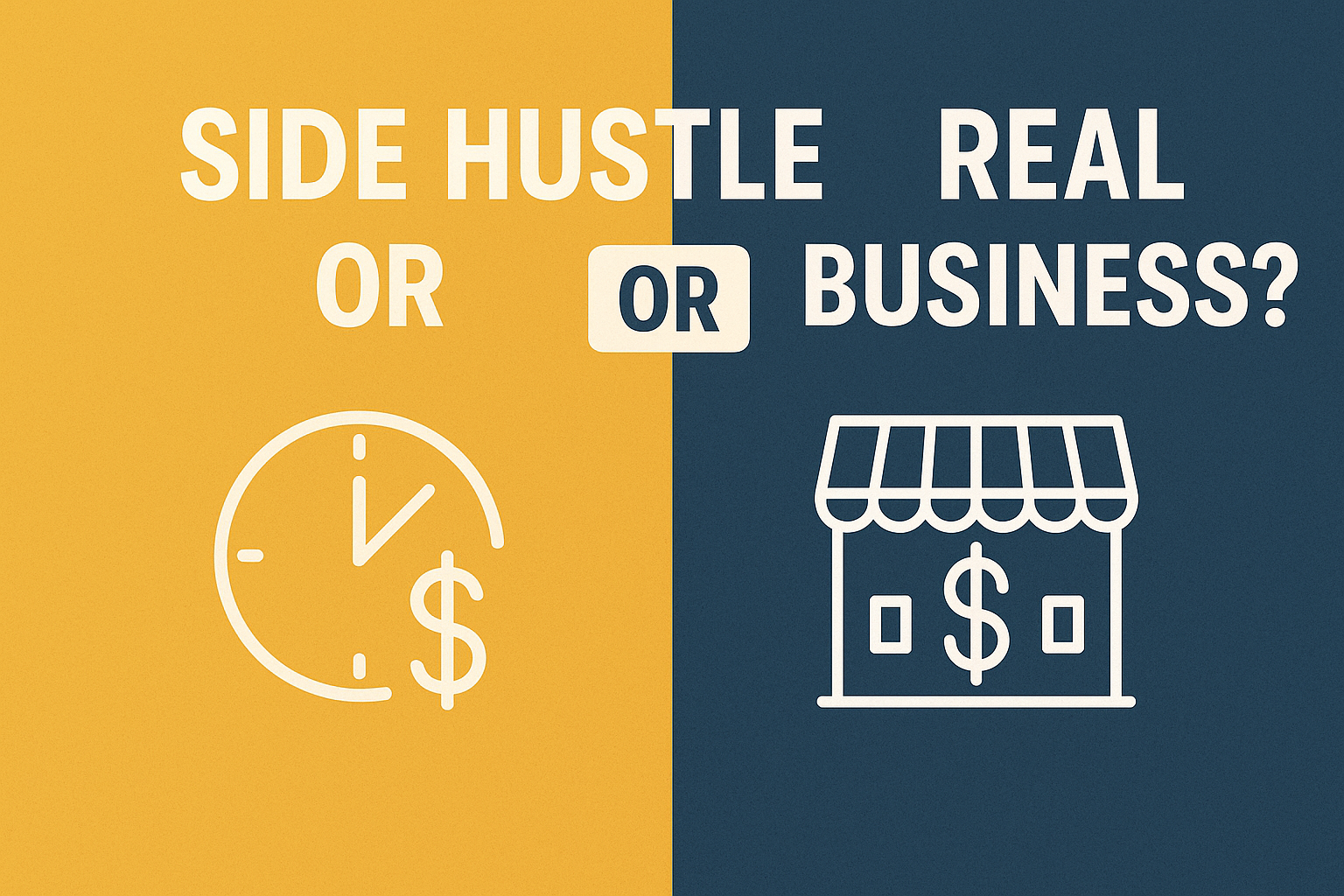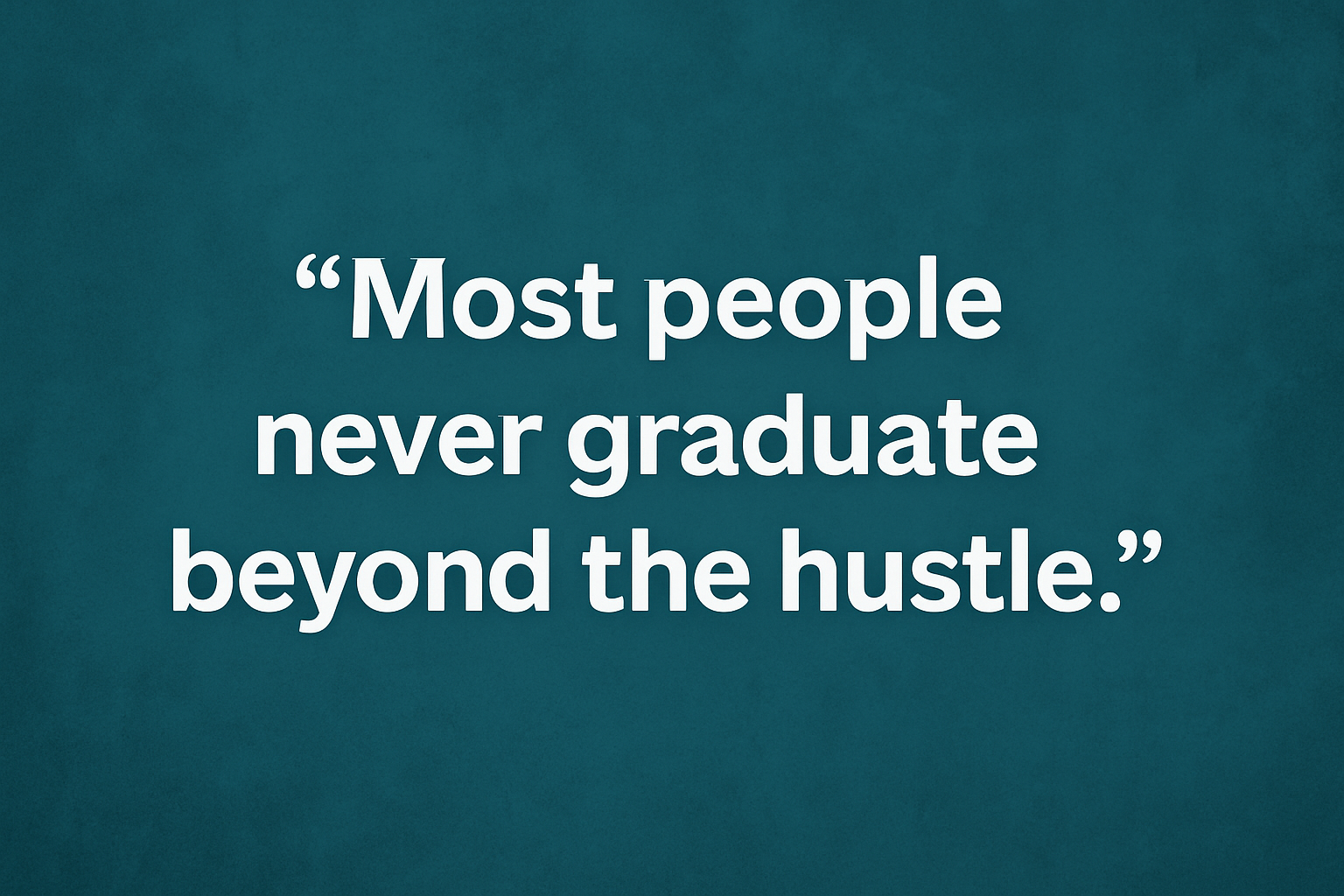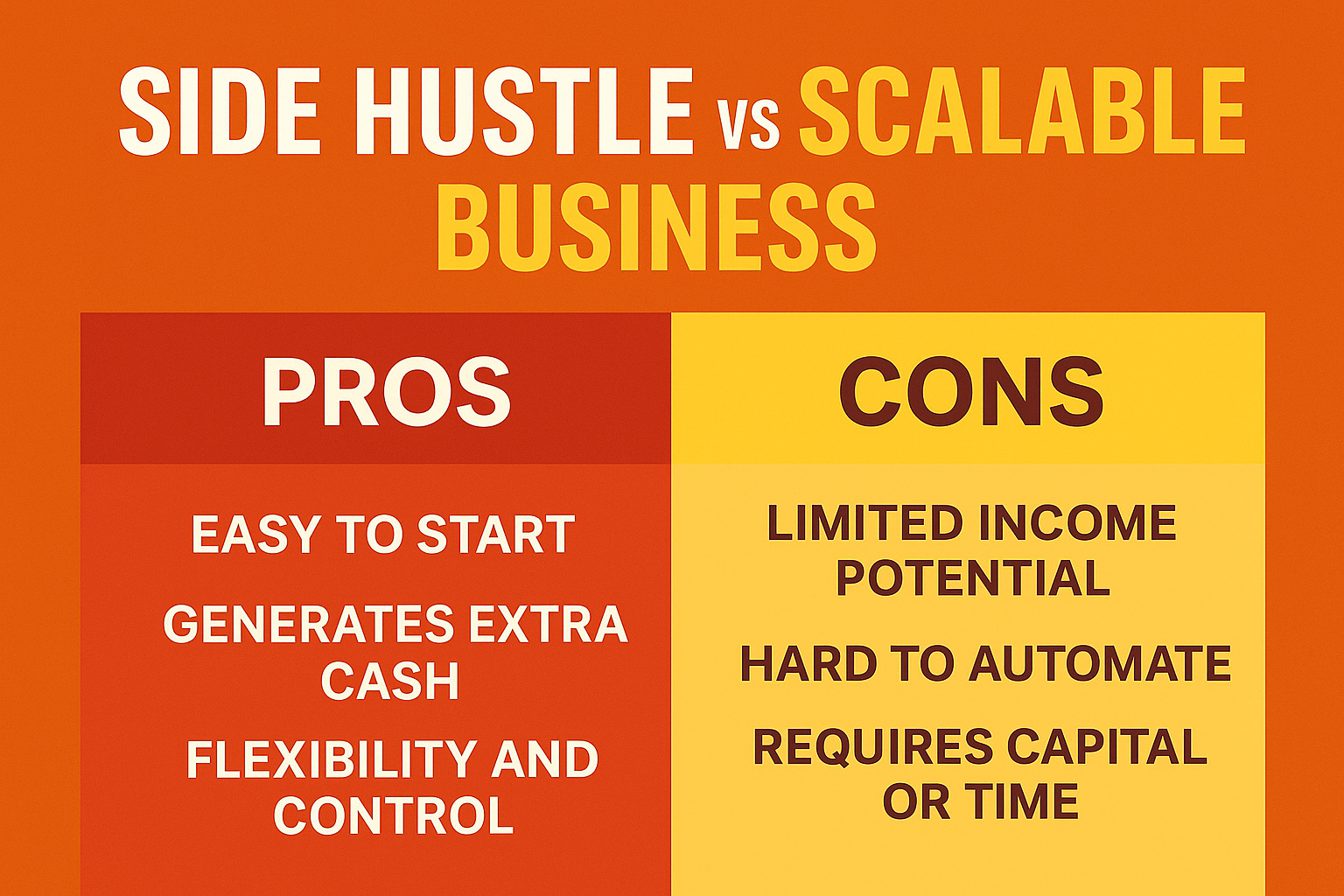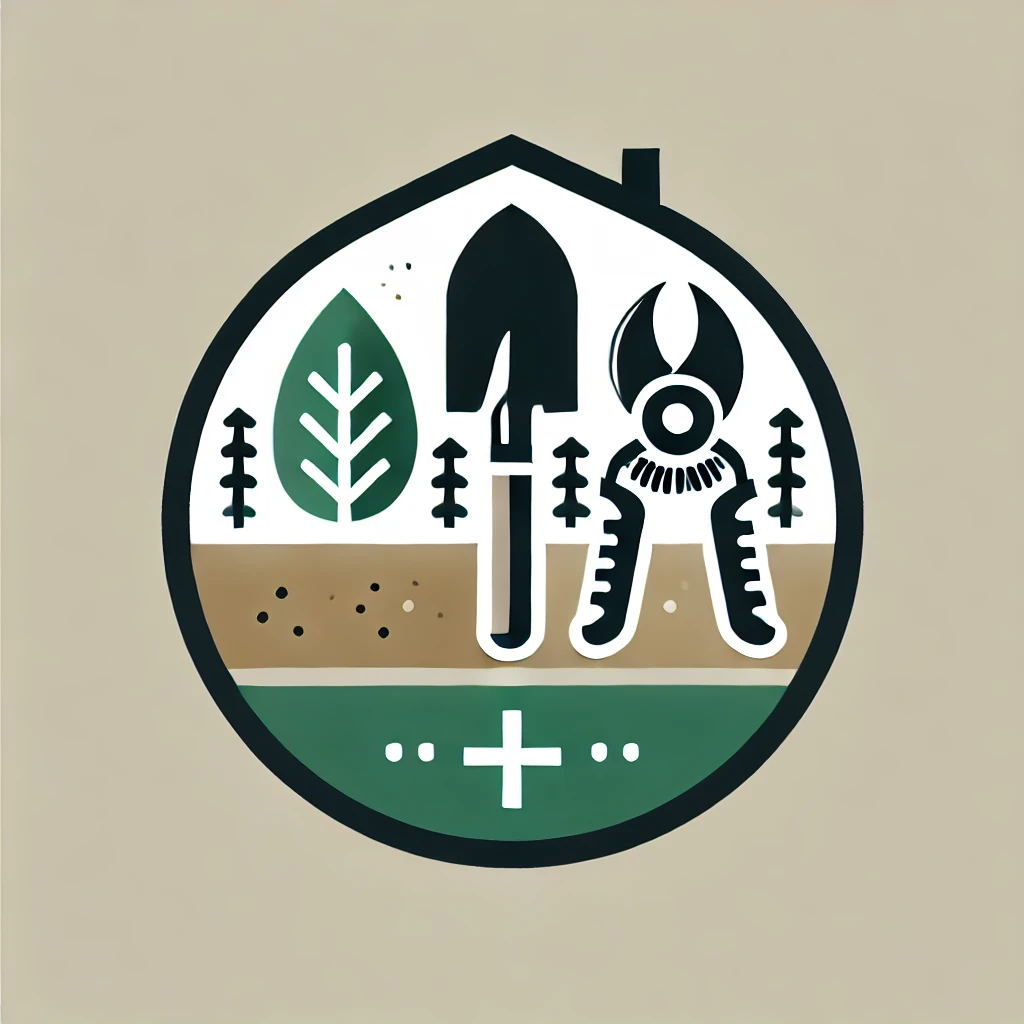Why the Distinction Matters More Than Ever
In 2025, it’s easier than ever to launch something online. Whether it's selling handmade goods on Etsy, starting a YouTube channel, or promoting affiliate offers, the barrier to entry is low.
But here's what trips people up:
They confuse a side hustle with a scalable business.
And while both can bring income, the approach, mindset, and outcome are very different. This article will help you identify which one you’re building, and show you how to transition from hustle to business—if that’s your goal.
What Is a Side Hustle?
A side hustle is a part-time income stream that:
- Typically trades your time or effort for money
- Is designed to run on the side of your main job
- Often doesn’t require much startup capital
- Has limited scalability unless intentionally developed
Examples:
- Freelance graphic design
- Selling products on Facebook Marketplace
- Doing DoorDash or UberEats
- Reselling thrift store finds on eBay


- Low risk
- Fast to start
- Great for learning new skills

- You’re often the engine
- Growth caps out quickly
- Burnout is common if not automated or upgraded
What Is a Scalable Business?

A scalable business is designed to:
- Grow revenue without a proportional increase in time or resources
- Use systems, automation, or teams to expand
- Operate with or without you doing all the work
Examples:
- An affiliate marketing funnel that converts leads into commissions 24/7
- A dropshipping store with automated fulfillment
- A digital course that sells while you sleep
- A blog or YouTube channel monetized through multiple streams


- Income isn’t limited by your hours
- Can run passively once built
- Easier to sell or systematize

- Requires upfront time or capital
- Takes longer to “get off the ground”
- Needs strategy, not just hustle
Why Most People Start with a Side Hustle

Let’s be real: Most of us start from a place of urgency.
We want to:
- Pay off debt
- Save for a vacation
- Quit a soul-sucking job
So we look for fast wins. That’s totally okay.
But here’s the problem…
Many people never graduate beyond the hustle.
They stay stuck trading time for money—and never experience scalable freedom.
Side Hustle vs. Scalable Business: At a Glance

| Factor | Side Hustle | Scalable Business |
|---|---|---|
| Time Input | High (ongoing) | High upfront, lower ongoing |
| Income Cap | Limited by your hours | Can scale beyond your personal effort |
| Automation | Minimal or manual | System-based, often automated |
| Skills Needed | Task-specific (freelancing, gig work) | Strategic (funnels, marketing, automation) |
| Risk Level | Low | Medium (investment of time or tools) |
| Exit Strategy | Rarely sellable | Can be sold or delegated |
How to Know Which One You’re Building
Ask yourself:
- Can I make money if I stop working tomorrow?
- If no → side hustle
- If yes → scalable system
- Am I the product—or have I created a system that delivers value?
- Are you selling your hours? Or is a funnel, blog, store, or system doing the heavy lifting?
- Is there a path to automation, delegation, or scaling?
- If your income relies solely on you showing up every day, you’re hustling—not scaling.
The Transition: Side Hustle → Scalable Business
It’s not either-or. You can absolutely start with a hustle and grow into a business.
Here’s how to make the shift:
 Step 1: Stabilize Your Hustle
Step 1: Stabilize Your Hustle
Make sure you have consistent cash flow. This gives you breathing room to invest time and resources into long-term systems.
Example:
Freelancing? Raise your rates and reduce hours to create time for business-building.
 Step 2: Document What Works
Step 2: Document What Works
Look at your side hustle and ask:
- What’s working?
- What can I automate?
- What can I turn into a product or repeatable offer?
 Step 3: Build Assets
Step 3: Build Assets
Start creating things that work without your constant input:
- Lead magnets
- Email sequences
- Affiliate funnels
- Evergreen video content
- Digital products or templates
These are the seeds of scale.
 Step 4: Shift Your Time Focus
Step 4: Shift Your Time Focus
Spend less time doing the work and more time building the system.
This may mean:
- Investing in software or a VA
- Learning how to run paid traffic
- Creating automation inside your email funnel
 Step 5: Measure Differently
Step 5: Measure Differently
Side hustlers measure time = money.
Business builders measure systems = money and metrics = scale.
Track:
- Email list growth
- Click-through rates
- Passive affiliate commissions
- Cost per lead or conversion
So, Which Should You Start With?

Start a side hustle to learn the ropes and build momentum.

Start laying the foundation for a scalable business now—even if you still hustle to pay the bills.
The best path? Do both—but don’t confuse them.
Conclusion: Trade Hustle for Leverage

A side hustle is great for getting ahead—but a scalable business is how you stay ahead.
As you build your income stream, ask yourself:
- Am I creating something that grows while I sleep?
- Or am I setting myself up for another job in disguise?
Make decisions now that create freedom later.
